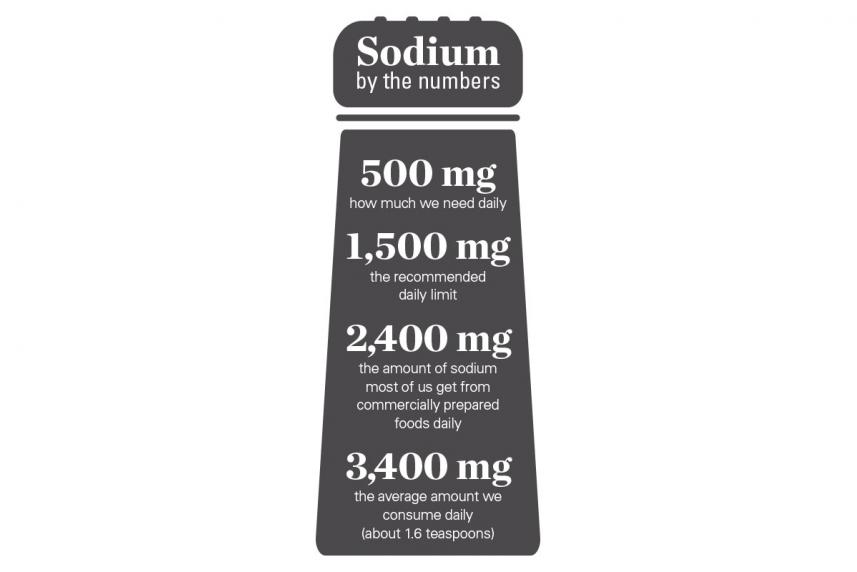Salt-ernatives
Here are four alternatives to traditional salt that can help you cut back on your sodium intake without losing out on flavor.

Monosodium glutamate (MSG)
PRO: MSG is added to foods because it provides umami flavor.
Along with salty, sweet, bitter, and sour, umami is one of the five basic tastes. It contributes to the savory experience.
CON: MSG is added to many not-so-healthy processed packaged foods and restaurant dishes that would be better to avoid eating regularly.
Potassium salt
PRO: Potassium salt, which contains potassium chloride and tastes much like table salt, can lower overall sodium intake and help lower blood pressure.
CON: It can have a bitter aftertaste when heated, so potassium salt may be better as a seasoning than as a cooking ingredient. Also, the extra potassium can negatively impact the health of people who have trouble eliminating excess amounts, such as those with kidney disease or who are taking medications that can increase potassium levels in the bloodstream.
Nutritional yeast
PRO: Although nutritional yeast isn’t marketed as a sodium substitute, it can work as an effective flavor boost. You can use it in place of all or some of the salt you would add to many dishes, both as a seasoning and a cooking ingredient.
CON: Not everyone loves the cheesy flavor.
Coconut aminos
PRO: Coconut aminos are made by fermenting coconut sap that looks and tastes similar to soy sauce. The big difference is that it has up to 70% less sodium. It can be a good way to enjoy dishes like stir-fries, where soy sauce is often used.
CON: While it’s viewed as an alternative to salt, a one tablespoon serving of coconut aminos contains at least 300 mg of sodium. As a result, it’s still important to consume coconut aminos in moderation.
WAIT, WHAT? THE MSG SURPRISE
For the most part, the concern that MSG is bad news for your health has been exaggerated. In fact, the Food and Drug Administration has classified the food additive as “generally recognized as safe.” Most people can consume it in reasonable amounts without worries.
Because it’s so flavorful, MSG can help food manufacturers reduce the amount of sodium they would normally add to their foods without compromising consumer acceptance or flavor.
Sodium by the numbers
500 mg how much we need daily
1,500 mg the recommended daily limit
2,400 mg the amount of sodium most of us get from commercially prepared foods daily
3,400 mg The average amount we consume daily (about 1.6 teaspoons)


